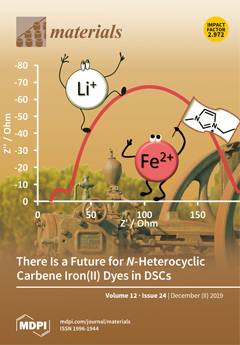High-entropy alloys (HEAs) with soft magnetic properties are one of the new candidate soft magnetic materials which are usually used under an alternating current (AC) magnetic field. In this work, the AC soft magnetic properties are investigated for FeCoNi
xCuAl (1.0 ≤
x ≤ 1.75) HEAs. The X-ray diffraction (XRD) and scanning electron microscope (SEM) show that the alloy consists of two phases, namely a face-centred cubic (FCC) phase and a body-centred cubic (BCC) phase. With increasing Ni content, the FCC phase content increased. Further research shows that the AC soft magnetic properties of these alloys are closely related to their phase constitution. Increasing the FCC phase content contributes to a decrease in the values of AC remanence (
AC Br), AC coercivity (
AC Hc) and AC total loss (
Ps), while it is harmful to the AC maximum magnetic flux density (
AC Bm).
Ps can be divided into two parts: AC hysteresis loss (
Ph) and eddy current loss (
Pe). With increasing frequency
f, the ratio of
Ph/
Ps decreases for all samples. When
f ≤ 150 Hz,
Ph/
Ps > 70%, which means that
Ph mainly contributes to
Ps. When
f ≥ 800 Hz,
Ph/
Ps < 40% (except for the
x = 1.0 sample), which means that
Pe mainly contributes to
Ps. At the same frequency, the ratio of
Ph/
Ps decreases gradually with increasing FCC phase content. The values of
Pe and
Ph are mainly related to the electrical resistivity (
ρ) and the
AC Hc, respectively. This provides a direction to reduce
Ps.
Full article






